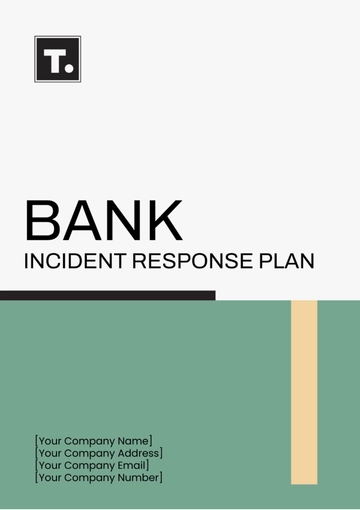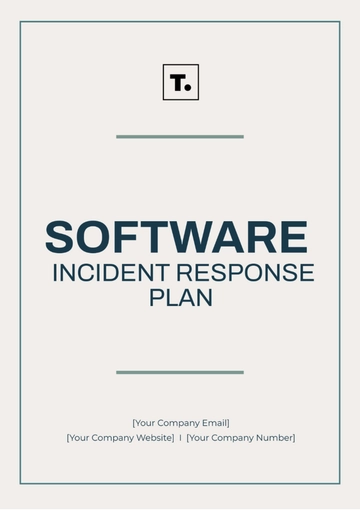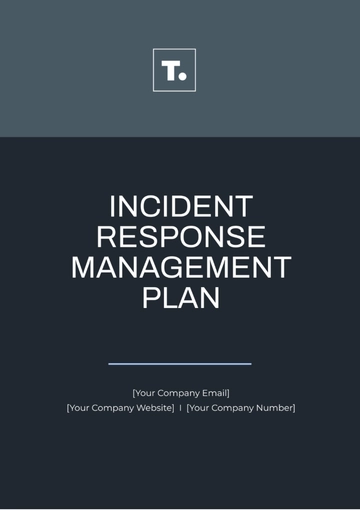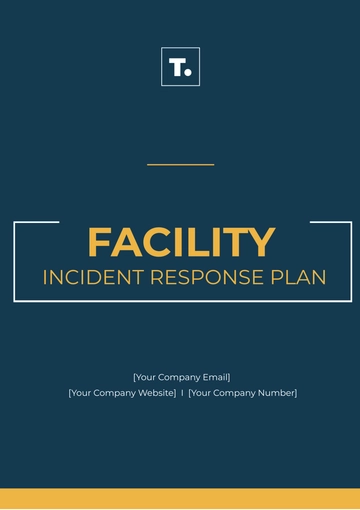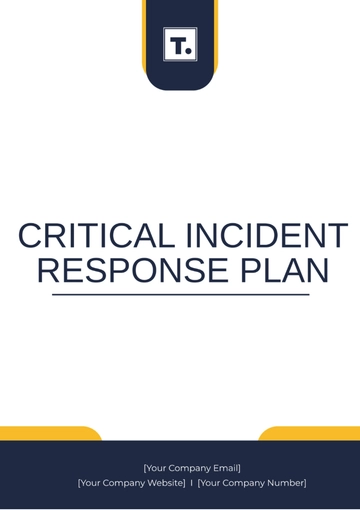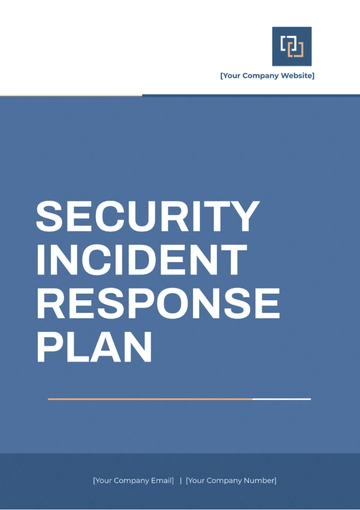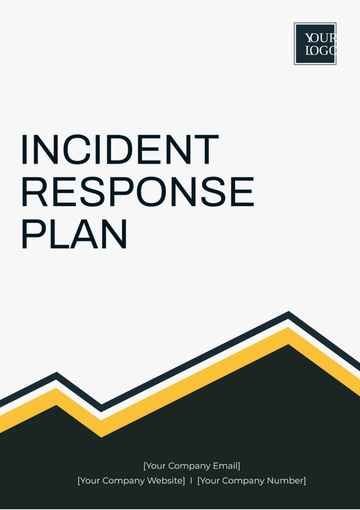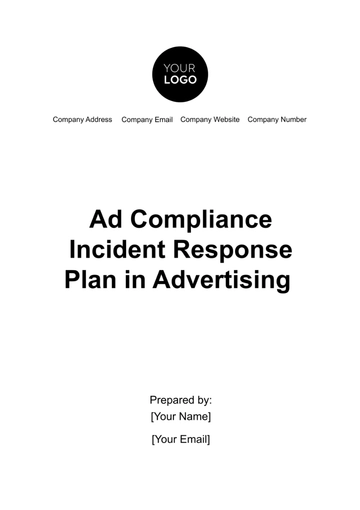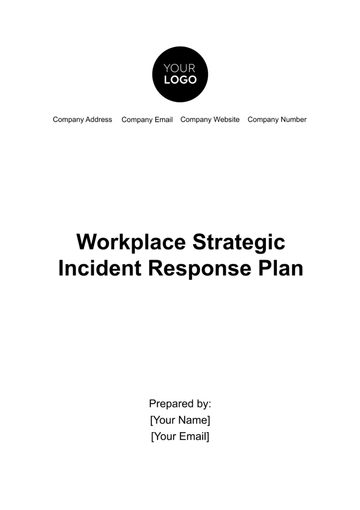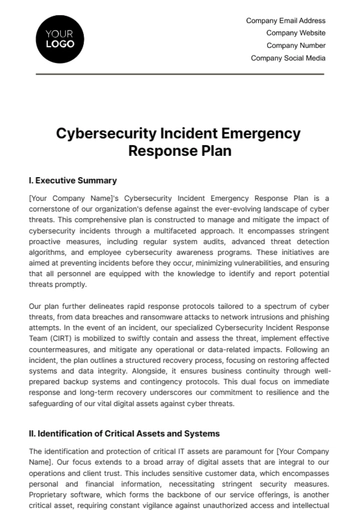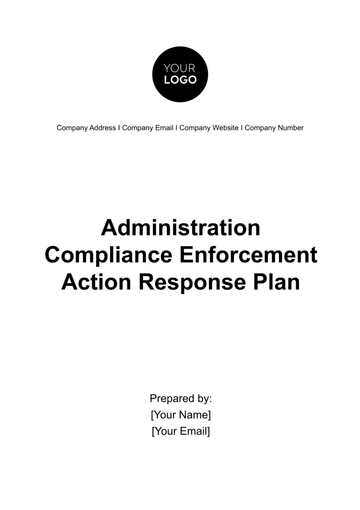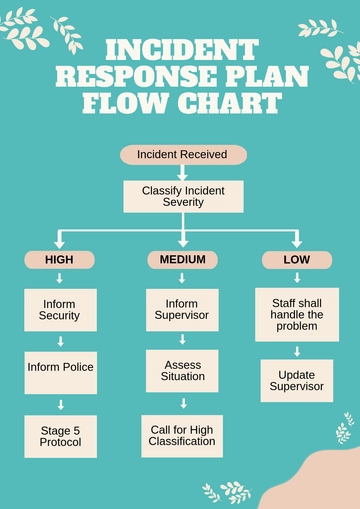Free Administration Compliance Enforcement Action Response Plan
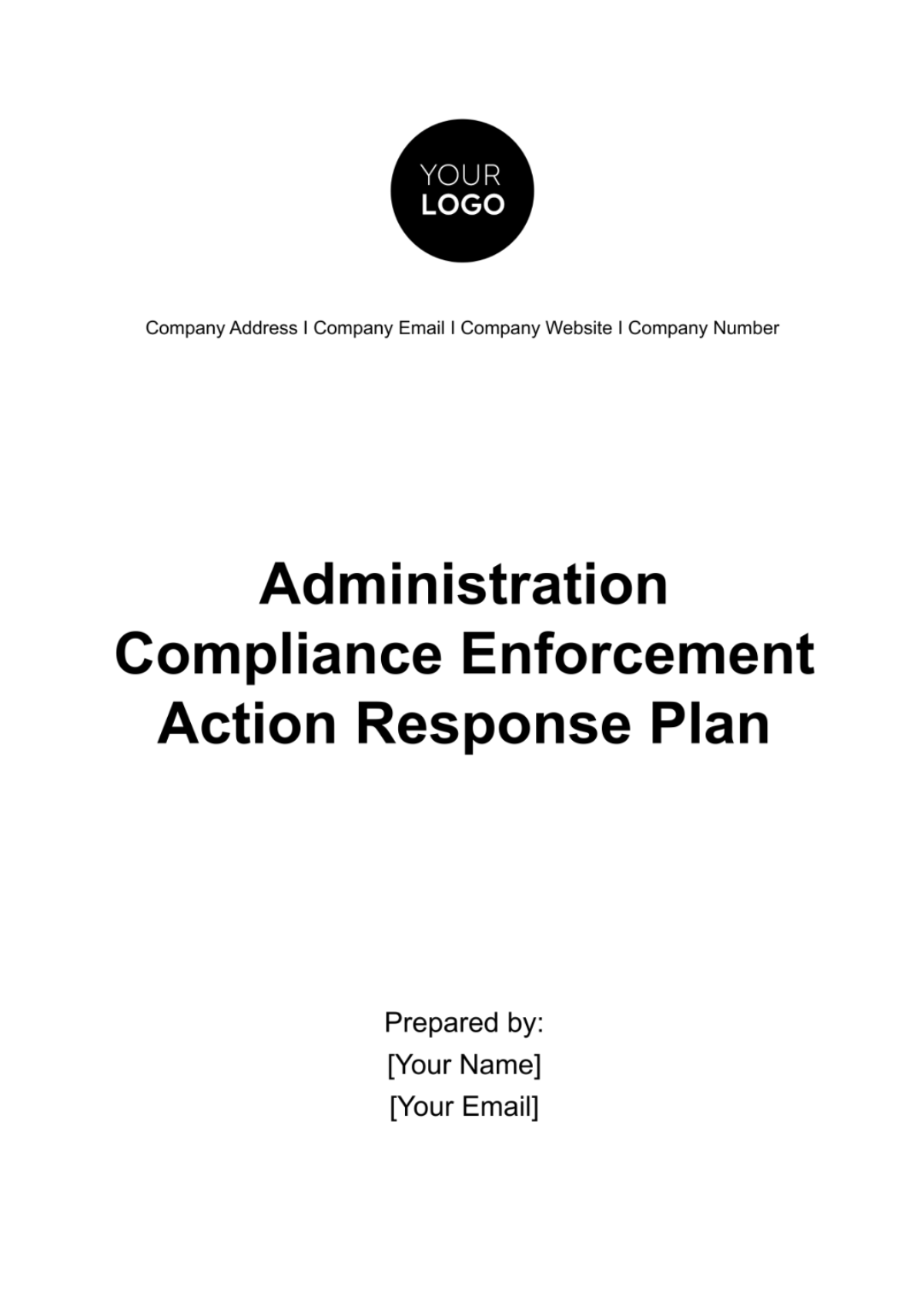
I. Purpose and Objective
The purpose of the Administration Compliance Enforcement Action Response Plan is to provide a detailed, strategic framework for [Your Company Name] to effectively navigate and respond to compliance enforcement actions. This plan serves as a comprehensive guide, designed to uphold legal and regulatory compliance, safeguard operational continuity, and mitigate the impact of enforcement actions on the organization's reputation and financial standing. Through the implementation of this plan, [Your Company Name] demonstrates its unwavering commitment to integrity, regulatory adherence, and the proactive management of compliance-related risks.
II. Situational Analysis
A thorough situational analysis forms the cornerstone of our response plan, offering a clear picture of [Your Company Name]'s current compliance posture and associated risks. This analysis encompasses an evaluation of legal, regulatory, policy, and procedure compliance, alongside an assessment of the potential repercussions stemming from non-compliance. By accurately identifying and categorizing these elements, [Your Company Name] is better positioned to tailor its response strategies effectively.
Aspect | Status | Risk Level |
|---|---|---|
Legal Compliance | Fully Compliant | Low |
Regulatory Compliance | Partially Compliant | Moderate |
Policy Compliance | Mostly Compliant | Moderate |
Procedure Compliance | Non-Compliant | High |
III. Response Team
The Compliance Enforcement Action Response Team plays a crucial role in managing compliance enforcement actions for [Your Company Name]. This multidisciplinary team ensures swift, comprehensive responses that align with the company's objectives and values. Here is a detailed breakdown of the team's structure, including roles, responsibilities, and contact information, presented without line breaks for clarity.
Team Member Role | Responsibilities | Name | Contact Information | Department |
|---|---|---|---|---|
Team Leader | Oversee the overall response to compliance enforcement actions. Ensure that all team members are coordinating effectively. Serve as the primary liaison with senior management. | [Your Name] | [Your Email] [Your Number] | Compliance |
Legal Advisor | Provide legal analysis and advice on compliance issues. Liaise with external legal counsel as required. Assist in drafting and reviewing legal documents related to compliance matters. | [Name] | [Email] [Number] | Legal Department |
Regulatory Specialist | Monitor and interpret relevant regulations and legislation. Advise on regulatory requirements and changes. Assist in compliance audits and regulatory reporting. | [Name] | [Email] [Number] | Regulatory Affairs |
Communications Officer | Develop and implement communication strategies for internal and external stakeholders. Prepare press releases and manage media relations. Coordinate communication with regulatory bodies. | [Name] | [Email] [Number] | Communications |
Operations Manager | Ensure operational adjustments for compliance. Coordinate with department heads to implement changes. Monitor the effectiveness of operational changes. | [Name] | [Email] [Number] | Operations |
IT Specialist | Manage and secure data relevant to compliance investigations. Ensure that IT systems comply with regulatory requirements. Assist in the implementation of technological solutions to compliance challenges. | [Name] | [Email] [Number] | Information Technology |
HR Coordinator | Oversee training and orientation for staff on compliance policies. Manage documentation of compliance and enforcement actions. Assist in internal investigations and reporting. | [Name] | [Email] [Number] | Human Resources |
IV. Action Triggers
Action triggers form the foundation of [Your Company Name]'s proactive approach to compliance management. These triggers signal the need for immediate action in response to various compliance-related events, ensuring the organization remains agile and compliant with all regulatory requirements. Below, you'll find a detailed table that outlines key action triggers, accompanied by descriptions and initial response steps, formatted without line breaks for clarity.
Action Trigger | Description | Initial Response Steps |
|---|---|---|
Regulatory Audit Initiation | Notification from a regulatory body about an upcoming audit. | Notify the Compliance Enforcement Action Response Team. Begin gathering necessary documentation. Schedule a preliminary meeting with the regulatory body. |
Notice of Non-Compliance | Receipt of formal communication from a regulatory authority indicating non-compliance. | Assess the notice details. Convene an emergency response team meeting to discuss the findings. Draft an initial response plan outlining corrective actions. |
Compliance Breach Discovery | Internal discovery of a compliance breach or gap through audits or employee reports. | Document the breach details. Initiate an internal investigation. Implement immediate containment measures. |
Legal Action Notification | Receipt of legal action or inquiry related to compliance issues, such as lawsuits or investigations. | Inform the legal advisor and team leader. Collect all relevant information and documents. Prepare for legal defense and response strategy. |
Whistleblower Report | Submission of a report by an employee or external party alleging non-compliance or misconduct. | Verify the report’s authenticity. Protect the confidentiality and rights of the whistleblower. Start a thorough investigation into the allegations. |
Regulatory Change Announcement | Announcement of changes in relevant laws or regulations that affect operational compliance. | Review the regulatory changes. Evaluate the impact on current operations and policies. Plan for necessary adjustments and updates. |
V. Response Procedures
The Response Procedures section of the Administration Compliance Enforcement Action Response Plan outlines a systematic approach for [Your Company Name] to manage and mitigate compliance enforcement actions. This step-by-step guide ensures that all compliance issues are addressed efficiently and effectively, minimizing potential disruptions and maintaining the integrity of the organization's operations. Below is a detailed breakdown of these procedures, formatted to provide a clear and comprehensive roadmap for action.
Step | Procedure | Responsibility | Details |
|---|---|---|---|
1. Initial Assessment | Assess the nature and severity of the compliance issue. | Compliance Officer | Determine the scope of the issue, involved parties, and potential impact on the organization. |
2. Internal Notification | Notify relevant internal stakeholders of the compliance issue. | Team Leader | Communicate the situation to senior management, affected departments, and the response team. |
3. Formulate Corrective Action Plan | Develop a plan to address and rectify the compliance issue. | Response Team | Identify required actions, assign tasks, set deadlines, and determine resources needed. |
4. Implement Corrective Actions | Execute the steps outlined in the corrective action plan. | Assigned Department Heads | Ensure timely execution of corrective measures, with oversight from the response team. |
5. Monitor and Adjust | Continuously monitor the effectiveness of corrective actions and make necessary adjustments. | Compliance Officer | Regularly report progress to the response team and adjust the plan as needed. |
6. Documentation | Document all steps taken to address the compliance issue. | HR Coordinator | Maintain records of the issue, actions taken, and outcomes for future reference and audits. |
7. Post-Action Evaluation | Evaluate the response to the compliance issue and identify lessons learned. | Team Leader | Conduct a debriefing session to review the effectiveness of the response and identify improvements for the plan. |
VI. Communication Plan
The Communication Plan is a critical component of [Your Company Name]'s Administration Compliance Enforcement Action Response Plan, designed to ensure clear, timely, and effective communication with all relevant stakeholders during compliance enforcement actions. This plan specifies the methods, timing, and content of communications, balancing transparency with discretion to uphold the organization's reputation and stakeholder trust. Below is a comprehensive table detailing the communication strategy:
Stakeholder | Communication Channel | Timing | Content | Responsible Party |
|---|---|---|---|---|
Internal Teams | Email, Intranet Announcements, Meetings | Immediate for initial notification; ongoing updates as needed | Overview of the situation, expected impact, responsibilities, and actions required | Communications Officer |
Senior Management | Email, Direct Meetings | Immediate for critical issues; regular updates as scheduled | Detailed analysis of the compliance issue, proposed response actions, impact assessment, and progress updates | Team Leader |
Regulatory Bodies | Official Letters, Email, Direct Meetings | As required by regulatory guidelines or immediately upon discovery of a compliance issue | Notification of the issue, proposed corrective actions, ongoing compliance efforts, and requests for guidance or clarification | Legal Advisor |
Partners | Email, Secure Portal Communications | As soon as practicable without compromising internal assessment | Relevant details of the compliance issue that may affect partnership operations, proposed solutions, and potential impacts | Operations Manager |
Public | Press Releases, Social Media, Company Website | After internal alignment and as deemed necessary by strategy | General information on the issue (as appropriate), reassurances about mitigation efforts, and impacts on customers or public services | Communications Officer |
Employees | Email, Intranet, Staff Meetings | Immediate for initial notification; regular updates as the situation evolves | Impact on operations, changes in procedures, training opportunities, and encouragement for reporting potential issues | HR Coordinator |
VII. Training and Orientation
Ensuring the effectiveness of the Administration Compliance Enforcement Action Response Plan requires a well-designed training and orientation program for all employees of [Your Company Name], with a focus on those directly involved in the compliance response team. This initiative is critical for building a knowledgeable workforce that can confidently navigate compliance challenges and execute their responsibilities with competence. Below is a comprehensive outline of the training and orientation framework designed to achieve these objectives.
Component | Content | Target Audience | Frequency |
|---|---|---|---|
Introduction to Compliance | Overview of compliance principles, [Your Company Name]'s compliance policies, and the consequences of non-compliance. | All employees | Annually |
Role-Specific Training | Detailed training on role-specific compliance responsibilities, procedures, and reporting mechanisms. | Employees in key roles including compliance, legal, HR, IT, and management | Bi-annually or as needed |
Response Plan Overview | Comprehensive overview of the plan, including action triggers, response procedures, and communication protocols. | All employees | Annually |
Response Team Training | In-depth training on the response plan, crisis management, decision-making under pressure, and communication strategies. | Compliance Enforcement Action Response Team | Quarterly |
Simulation Exercises | Realistic simulation exercises designed to mimic potential compliance challenges and enforcement actions. | Compliance Enforcement Action Response Team, with participation from other relevant departments | Bi-annually |
Evaluation and Feedback | Evaluation forms and feedback sessions following training sessions and simulation exercises. | All participating employees | After each training session |
VIII. Plan Review and Updates
The effectiveness of the Administration Compliance Enforcement Action Response Plan is contingent upon its ability to adapt to the ever-evolving compliance and regulatory environments. [Your Company Name] is dedicated to ensuring that this plan remains current, comprehensive, and fully equipped to navigate the complexities of compliance management. To achieve this, a structured review and update process is integral. Below is an outline of the framework designed for the regular review and timely updating of the plan.
Activity | Process | Frequency | Responsible Party |
|---|---|---|---|
Regulatory Landscape Review | Monitor changes in laws and regulations. Analyze implications for [Your Company Name]'s operations and compliance posture. | Semi-annually | Regulatory Affairs Team |
Compliance Performance Analysis | Review compliance incidents, responses, and outcomes. Identify trends and areas for improvement. | Annually | Compliance Officer |
Stakeholder Feedback | Solicit feedback from employees, management, and external stakeholders, including regulatory bodies, where appropriate. | Annually | Communications Officer |
Plan Update | Update the plan to address new compliance challenges, incorporate best practices, and refine response strategies. | Annually or as needed | Compliance Enforcement Action Response Team |
Training and Communication | Update training programs and conduct sessions to reflect changes in the plan. Communicate updates to all employees and relevant external parties. | Following plan updates | HR Coordinator and Communications Officer |
Simulation Exercise | Conduct simulation exercises based on updated scenarios to ensure the plan’s effectiveness and identify any gaps. | Bi-annually | Compliance Enforcement Action Response Team |
IX. Documentation and Record-Keeping
Meticulous documentation and record-keeping form the backbone of [Your Company Name]'s approach to managing compliance enforcement actions. This practice is not merely procedural but strategic, ensuring accountability, facilitating analysis, and bolstering the company's defense mechanisms in the face of regulatory scrutiny. By maintaining comprehensive records, [Your Company Name] can swiftly address compliance concerns, leverage historical data for better decision-making, and demonstrate a commitment to regulatory adherence and operational excellence.
A. Legal Compliance and Defense
Documenting all compliance-related activities, from the initial notification of a potential issue to the final resolution, provides [Your Company Name] with a robust legal defense in the event of litigation or regulatory investigation. This includes detailed records of communications, internal and external audits, corrective actions taken, and the rationale behind each decision. Such documentation is invaluable, offering clear evidence of due diligence and proactive management of compliance matters.
B. Trend Analysis and Strategic Insights
Regular analysis of documented compliance incidents and enforcement actions enables [Your Company Name] to identify patterns and trends that may indicate underlying systemic issues or vulnerabilities. By leveraging this data, the company can anticipate potential compliance challenges and adapt its strategies accordingly. This proactive approach not only minimizes risk but also contributes to the strategic refinement of compliance processes and the strengthening of organizational resilience.
C. Continuous Improvement
Documentation and record-keeping are critical to the continuous improvement of [Your Company Name]'s compliance program. By systematically reviewing and assessing the effectiveness of past actions, the company can identify areas for enhancement, develop best practices, and refine its response plan to better meet evolving compliance standards and regulatory expectations. This cycle of learning and improvement is fundamental to maintaining the highest standards of compliance and operational integrity.
X. Conclusion
The Administration Compliance Enforcement Action Response Plan is a reflection of [Your Company Name]'s unwavering commitment to excellence in compliance management. This strategic framework is not merely a set of procedures; it represents a holistic approach to navigating the complex landscape of legal and regulatory obligations. By meticulously designing and rigorously implementing this plan, [Your Company Name] not only safeguards its operational integrity and reputation but also reinforces its position as a responsible and trustworthy entity in the eyes of stakeholders, regulatory bodies, and the broader community.
A. Strategic Alignment and Proactive Leadership
At the heart of this plan lies [Your Company Name]'s strategic vision to integrate compliance management with its overall business objectives. This alignment ensures that compliance is not seen as a reactive measure but as a proactive leadership effort to drive ethical business practices, operational efficiency, and sustainable growth. [Your Company Name]'s leadership in adopting this plan demonstrates foresight and a deep understanding of the dynamic interplay between regulatory compliance and strategic business outcomes.
B. Building Stakeholder Trust and Confidence
In today's business environment, trust and transparency are invaluable assets. [Your Company Name]'s dedication to maintaining the highest standards of compliance significantly enhances its credibility among investors, customers, partners, and regulatory agencies. By openly communicating its commitment to compliance and demonstrating its ability to effectively manage enforcement actions, [Your Company Name] builds a foundation of trust that is crucial for long-term relationships and business success.
C. Future-Proofing the Organization
The Administration Compliance Enforcement Action Response Plan is a dynamic tool that prepares [Your Company Name] for future challenges and opportunities in the regulatory landscape. By establishing a culture of continuous improvement, staying abreast of regulatory developments, and fostering an environment where compliance is ingrained in every action, [Your Company Name] is well-positioned to navigate future changes. This forward-thinking approach ensures that the organization remains resilient and adaptable, ready to seize new opportunities while mitigating risks.
[Your Company Name]'s proactive and strategic approach to compliance management, as embodied in the Administration Compliance Enforcement Action Response Plan, sets a benchmark for excellence. It underscores the company's commitment to legal and regulatory adherence, operational resilience, and ethical leadership, thereby safeguarding and enhancing its value to all stakeholders and the community at large.
- 100% Customizable, free editor
- Access 1 Million+ Templates, photo’s & graphics
- Download or share as a template
- Click and replace photos, graphics, text, backgrounds
- Resize, crop, AI write & more
- Access advanced editor
Template.net's Administration Compliance Enforcement Action Response Plan Template is an accessible, highly customizable tool, user-friendly and 100% editable with our AI Editor Tool. This robust solution helps streamline your firm's response plan, ensuring a smooth and efficient process. Enhance your business's compliance practice with our innovative tools and join thousands of successful marketing professionals who are utilizing our template to save time and boost productivity.
You may also like
- Finance Plan
- Construction Plan
- Sales Plan
- Development Plan
- Career Plan
- Budget Plan
- HR Plan
- Education Plan
- Transition Plan
- Work Plan
- Training Plan
- Communication Plan
- Operation Plan
- Health And Safety Plan
- Strategy Plan
- Professional Development Plan
- Advertising Plan
- Risk Management Plan
- Restaurant Plan
- School Plan
- Nursing Home Patient Care Plan
- Nursing Care Plan
- Plan Event
- Startup Plan
- Social Media Plan
- Staffing Plan
- Annual Plan
- Content Plan
- Payment Plan
- Implementation Plan
- Hotel Plan
- Workout Plan
- Accounting Plan
- Campaign Plan
- Essay Plan
- 30 60 90 Day Plan
- Research Plan
- Recruitment Plan
- 90 Day Plan
- Quarterly Plan
- Emergency Plan
- 5 Year Plan
- Gym Plan
- Personal Plan
- IT and Software Plan
- Treatment Plan
- Real Estate Plan
- Law Firm Plan
- Healthcare Plan
- Improvement Plan
- Media Plan
- 5 Year Business Plan
- Learning Plan
- Marketing Campaign Plan
- Travel Agency Plan
- Cleaning Services Plan
- Interior Design Plan
- Performance Plan
- PR Plan
- Birth Plan
- Life Plan
- SEO Plan
- Disaster Recovery Plan
- Continuity Plan
- Launch Plan
- Legal Plan
- Behavior Plan
- Performance Improvement Plan
- Salon Plan
- Security Plan
- Security Management Plan
- Employee Development Plan
- Quality Plan
- Service Improvement Plan
- Growth Plan
- Incident Response Plan
- Basketball Plan
- Emergency Action Plan
- Product Launch Plan
- Spa Plan
- Employee Training Plan
- Data Analysis Plan
- Employee Action Plan
- Territory Plan
- Audit Plan
- Classroom Plan
- Activity Plan
- Parenting Plan
- Care Plan
- Project Execution Plan
- Exercise Plan
- Internship Plan
- Software Development Plan
- Continuous Improvement Plan
- Leave Plan
- 90 Day Sales Plan
- Advertising Agency Plan
- Employee Transition Plan
- Smart Action Plan
- Workplace Safety Plan
- Behavior Change Plan
- Contingency Plan
- Continuity of Operations Plan
- Health Plan
- Quality Control Plan
- Self Plan
- Sports Development Plan
- Change Management Plan
- Ecommerce Plan
- Personal Financial Plan
- Process Improvement Plan
- 30-60-90 Day Sales Plan
- Crisis Management Plan
- Engagement Plan
- Execution Plan
- Pandemic Plan
- Quality Assurance Plan
- Service Continuity Plan
- Agile Project Plan
- Fundraising Plan
- Job Transition Plan
- Asset Maintenance Plan
- Maintenance Plan
- Software Test Plan
- Staff Training and Development Plan
- 3 Year Plan
- Brand Activation Plan
- Release Plan
- Resource Plan
- Risk Mitigation Plan
- Teacher Plan
- 30 60 90 Day Plan for New Manager
- Food Safety Plan
- Food Truck Plan
- Hiring Plan
- Quality Management Plan
- Wellness Plan
- Behavior Intervention Plan
- Bonus Plan
- Investment Plan
- Maternity Leave Plan
- Pandemic Response Plan
- Succession Planning
- Coaching Plan
- Configuration Management Plan
- Remote Work Plan
- Self Care Plan
- Teaching Plan
- 100-Day Plan
- HACCP Plan
- Student Plan
- Sustainability Plan
- 30 60 90 Day Plan for Interview
- Access Plan
- Site Specific Safety Plan
